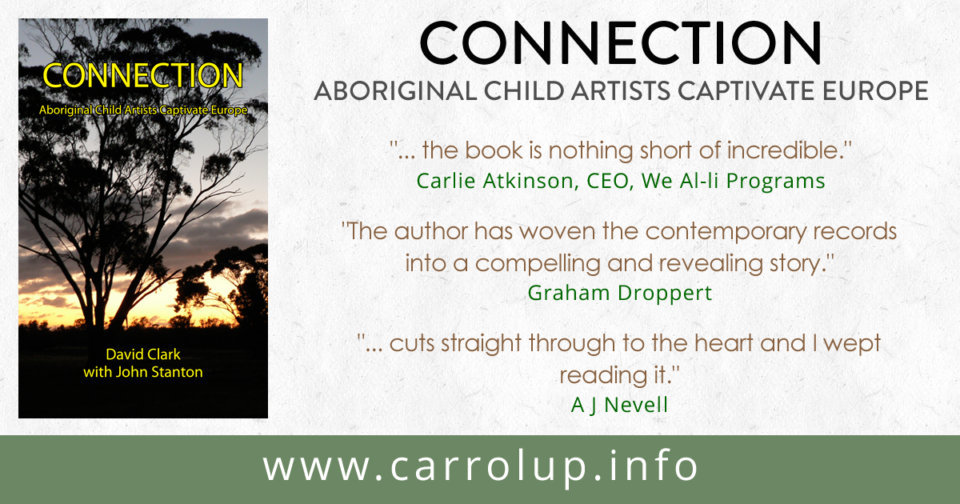In my last few blogs, I described, using text from our new book Connection: Aboriginal Child Artists Captivate Europe, what happened at Carrolup Native Settlement before the arrival of teacher Noel White. In my last blog, I described the time that Mrs Olive Elliot spent at Carrolup School and revealed that she eventually found the job too much.
However, Mrs Elliot cared about the Aboriginal children and therefore set about finding a caring replacement. I continue with text from Chapter 3 of our book:
“Whilst in her family’s hometown of Geraldton during the school holidays of January 1946, Mrs Elliot visits Noel White and his wife Lily at their home in Narngulu, a small railway siding located about six miles (10 kms) south east of Geraldton. Noel has been the teacher at the one room school in Narngulu for eleven years. At present, he is teaching a dozen white children, including three of his own. Mrs Elliot asks him if he would consider applying for the position of headmaster and teacher at Carrolup School.
Noel White had taught Aboriginal children when he was appointed in 1931 as the teacher at a small school in the gold-mining town of Payne’s Find, located 270 miles (430 kms) north east of Perth. Payne’s Find, with a population of around 500, was the sort of town where a prospector would enter the pub, put down a lump of gold on the bar, and tell the barman to keep serving everyone in the building until the gold is ‘spent’.
When he had opened the school at Payne’s Find, Noel was surprised to find only one white boy in a class of over 40 children. The rest were Aboriginal. During his five years in Payne’s Find, Noel gained a strong reputation with the Department of Education for the high quality of his work in the school.
Mrs Elliot knows of Noel’s reputation and this is why she has approached him. She describes the challenges she had faced at Carrolup, not just the behaviour of some of the children, but also the living conditions on the Settlement. Her accommodation was poor, water scarce, and there was no electricity. The only light came from a hurricane lamp. At the same time, Mrs Elliot emphasises the needs of the Aboriginal children. She feels that Noel is just the sort of person they need to help them.
Noel White points out to Mrs Elliot that the situation in Payne’s Find was different to what she has described at Carrolup, as the children were not part of a native settlement. They lived with their families. Their parents earned a living trapping foxes and kangaroos, or working on stations as boundary riders, stock-drovers, or shearers, and in some cases as prospectors.
However, Mrs Elliot appeals to Noel White, saying of the children:
‘They have nothing in the world – no hope, no future. Perhaps you could give them something!’ M D Miller and F Rutter, Child Artists of the Australian Bush, 1952, p. 34 [Emphasis in original]
After the meeting with Mrs Elliot, Noel and his wife have long and hard discussions about him taking up the teaching position at Carrolup. There are many enquiries to, and negotiations with, the Education Department. Eventually, the Whites decide that Noel will apply for the position. Both Noel and Lily believe that there is much that they can do to help the children of Carrolup. Noel’s application is duly accepted. The Whites tell their children and prepare for a move south.
Revel Cooper, in his 1960 reflections on Carrolup, says of the news the children receive about their new teacher:
‘Thus for the first time in our life we were going to have a man teacher, and I can assure you that we didn’t like it and we dreaded the arrival of this stranger. Then started the questions. Who was he? What was he like? Was he allowed to cane you? and countless other questions.’” CONNECTION: Aboriginal Child Artists Captivate Europe. David Clark, in association with John Stanton. Copyright © 2020 by David Clark



